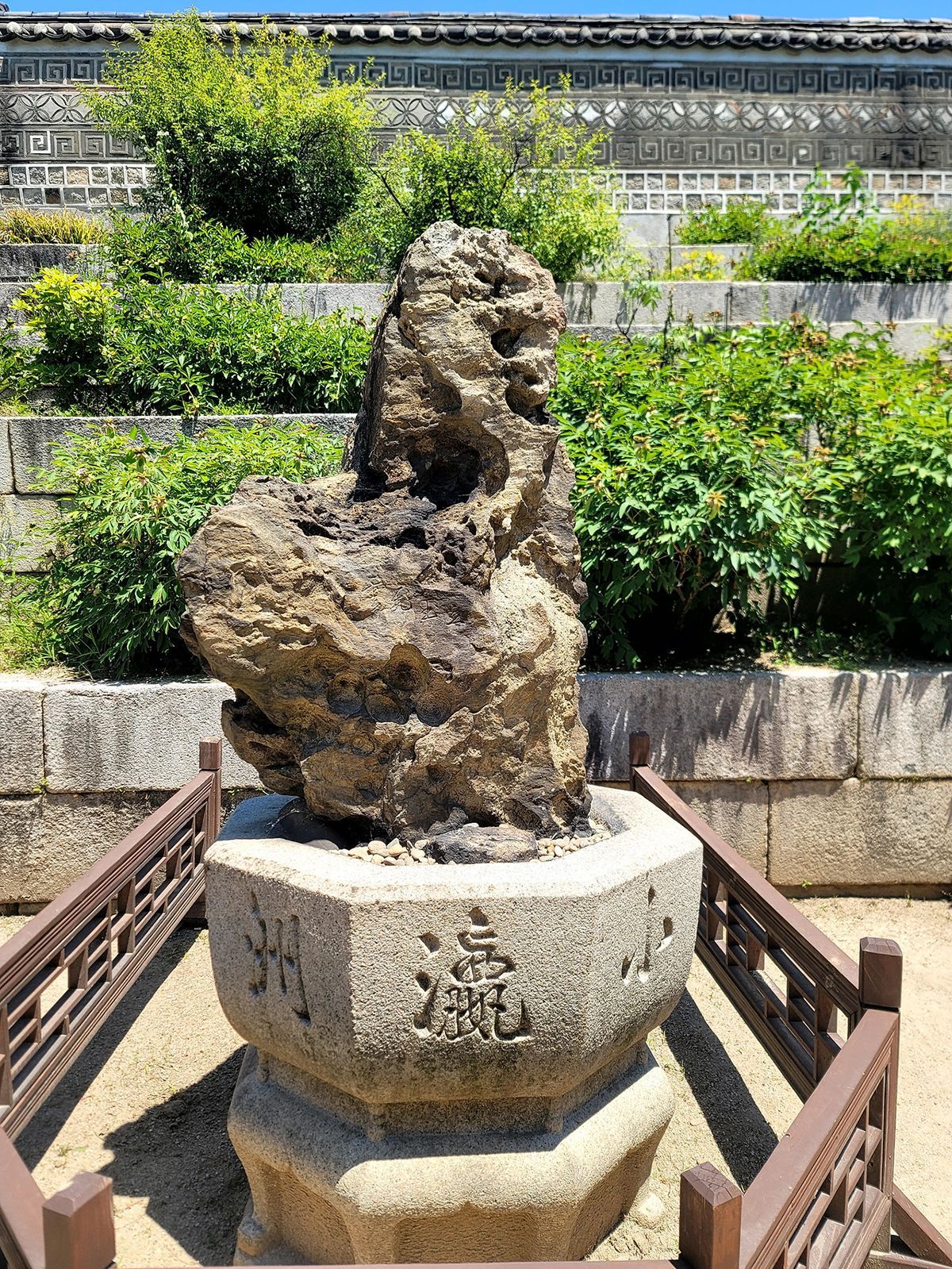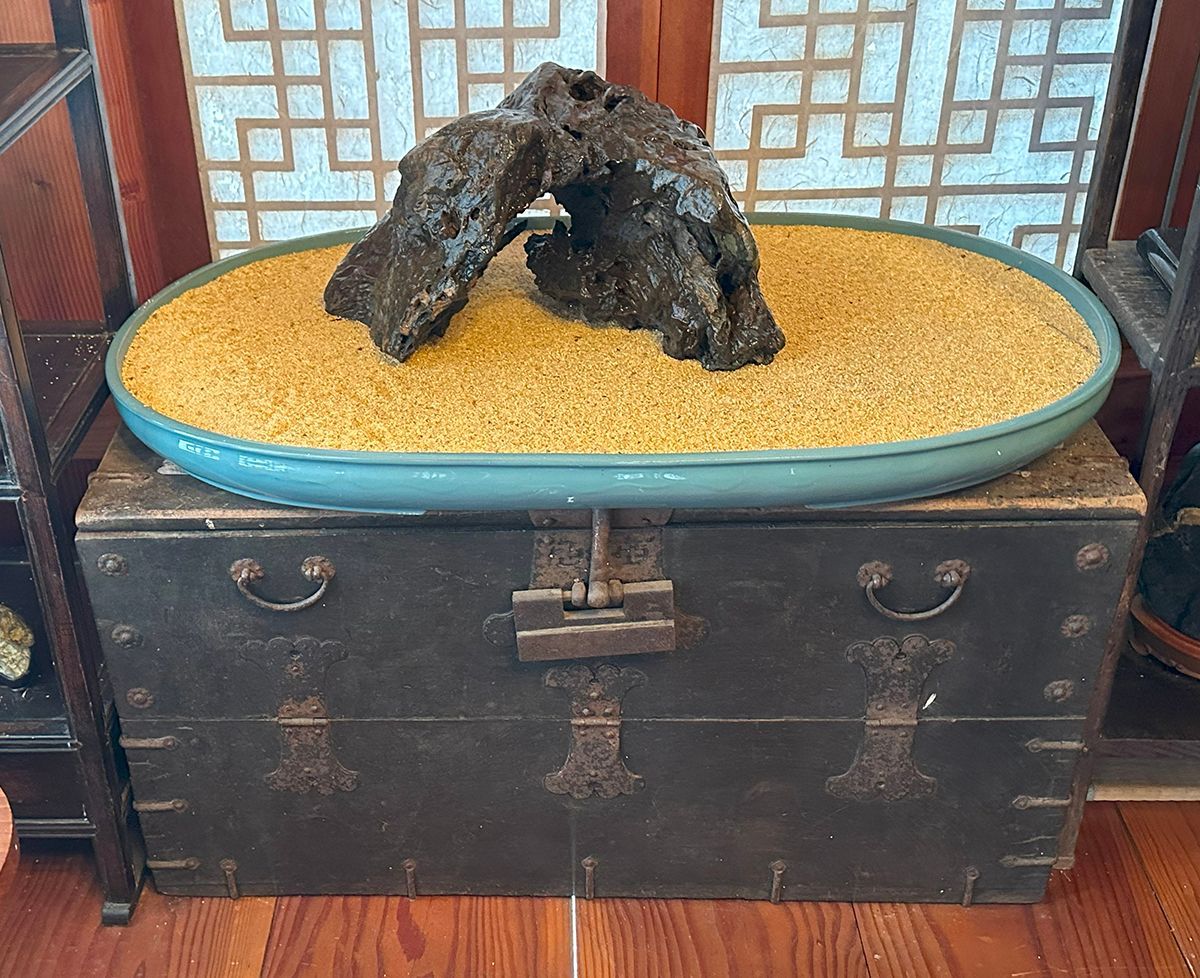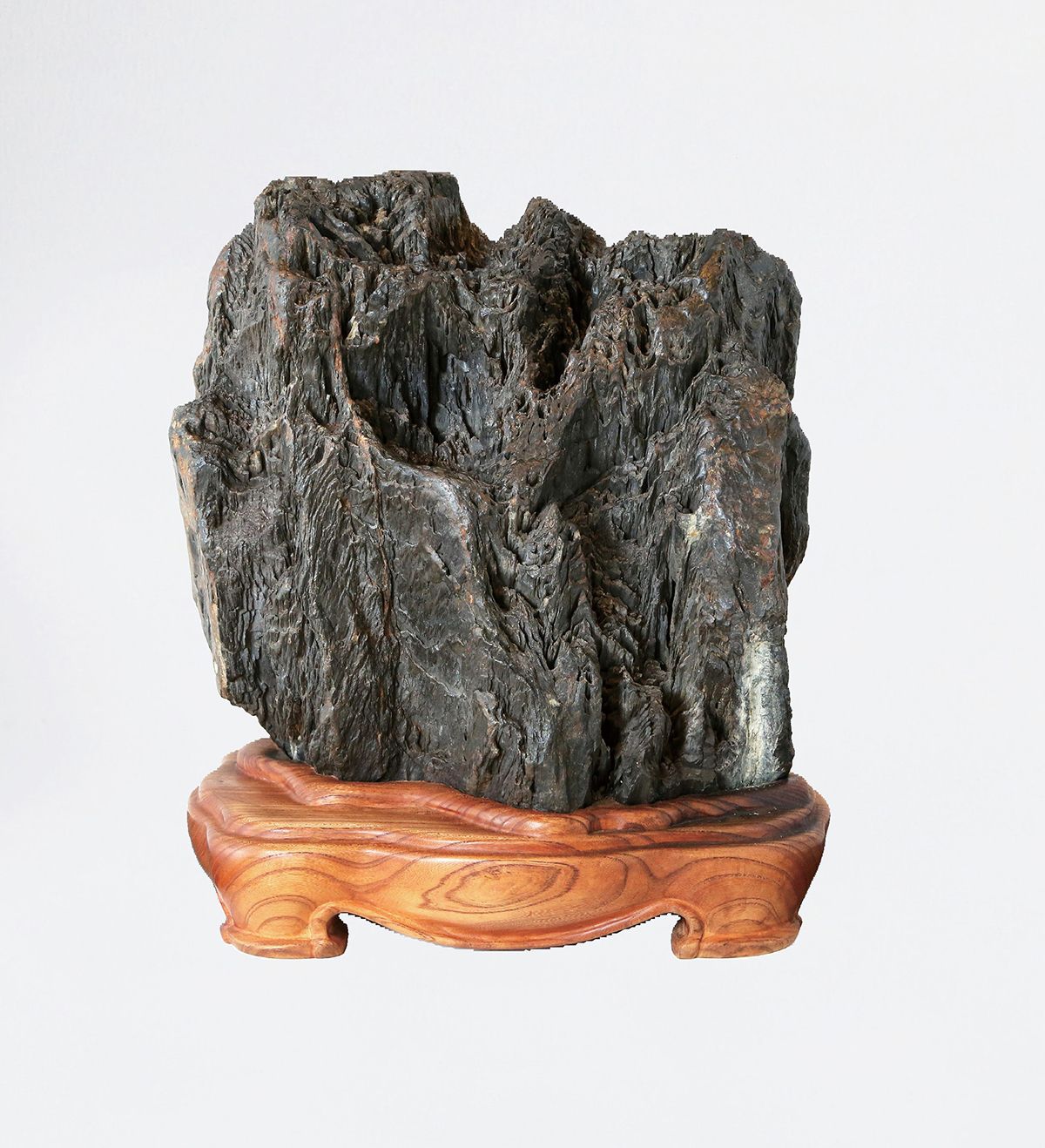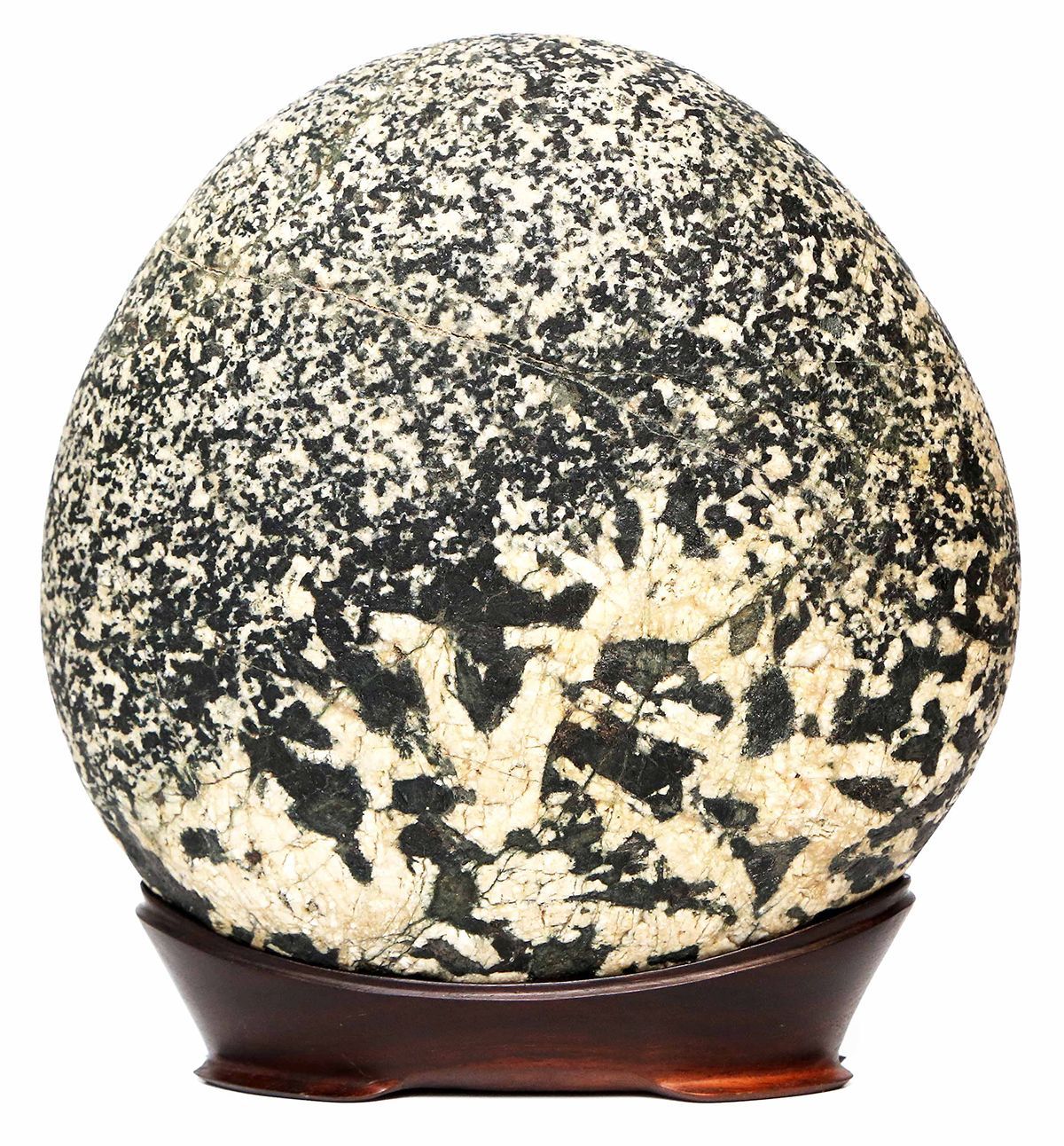Korean Suseok, An Introduction
An introduction to Korean Viewing Stone appreciation, Suseok
By Thomas S. Elias
Korea has a rich and well-documented Suseok history. It is an integral part of the ancient Asian art of viewing stone appreciation. Despite this, Korean practices are largely unknown to scholars, collectors, and art connoisseurs in Western countries. I believe they have the second-largest number of people actively collecting and display stones in the world today after China.
The term Suseok (壽石) was first used by Chusa Gim Jeonghui (1786-1856), a scholar and most prominent calligrapher during in the mid-1800s or late Joseon period, in his establishment, the Suseok Old Moss Pond Pavilion (壽石老苔池館). This was approximately 100 years before the first recorded use of the word suiseki in Japan, which was in Meiji 39 or 1906.
Suseok Old Moss Pond Pavilion sign
The Korean term Suseok translates as the long life of stones. Early Korean scholars believed that rocks lasted an eternity and were indestructible. Korea’s Suseok were highly influenced by Chinese practices during the Ming and Qing dynasties. Koreans first adopted the Chinese methods but slowly developed an ambiance of difference reflecting Korean aesthetics, especially the aesthetics of naturalness. Displaying unaltered natural stones plays a key role in Suseok.
Stone appreciation came to Korea from China. Stones were first displayed in gardens, then indoors. Large natural stones have been displayed in Korean gardens since the 14th century. The Korean nobility and literati embraced stone appreciation, first in gardens, and as individual viewing stones during the Joseon dynasty (1392-1910). Artists created many poems and paintings about unusual rocks, including Kim Yugeun’s Album of Inkstone Paintings in the early 19th century and Oksu Jo Myeon-ho’s trilogy of 23 poems in 1867 titled "Tribute to Stones.“


The rapid expansion and popularity of Suseok began in the late 1960s and continued for several decades thereafter. This period followed the rise in popularity of Suiseki in Japan a decade earlier. The first Suseok public exhibition was held in Korea at Busan Public Hall. April 12 to 17, 1967.
There are approximately 80,000 people, many in one of the 200 clubs, in Korea practicing in the collection and display of Suseok. Also, there are over 100 exhibitions held yearly, and 17 private and publicly supported Suseok museums in South Korea. Stone collectors in Korea are highly skilled in using the Internet and posting videos on YouTube. An estimated 500 stone dealers support the large active community of collectors.
The main categories of Suseok by form are: landscape, objects, pattern or color, and abstract stones. A good Suseok must be hard, appeared aged, typically dark in color, and must stimulate the imagination. Each stone should display a natural unaltered beauty. Stones were first collected in the mountains and rivers, and later to beaches along the extensive Korean coastline.
Carved wood bases and ceramic or metal trays are used to display Korean stones. Some bases are not stained, but left lighter in color to highlight the wood’s grain. The upper lip of the base is usually more prominent and the legs more conspicuous than in Japanese style bases. Rounded and ovoid-shaped stones found on beaches are held in darked-stained, simple cup-shaped bases.


Oval or rectangular glazed ceramic trays (suban) are more frequently used than beautifully crafted bronze trays. Although, antique bronze trays with decorative features on the outer rims are considered elegant. Coarse to fine grain, uniform colored sand is used in the trays. Smaller trays used finer-grained sand. Spraying water on the stone and watch the changing patterns is a common practice in Korea.
We are just beginning to learn about the role of Korean Suseok in the development of the ancient Asian art form of viewing stone appreciation. Further research, translations, and critical studies will reveal the full extent of the importance of Korean Suseok in understanding the multi-faceted relationship between rocks, people and culture.
________________________________
To learn more about Korean Suseok, watch the seminar, Suseok, The Way of Korean Viewing Stone Appreciation on YouTube at
https://youtu.be/elTQzz71AOE?si=MAc15Mtc2TcczhAK

